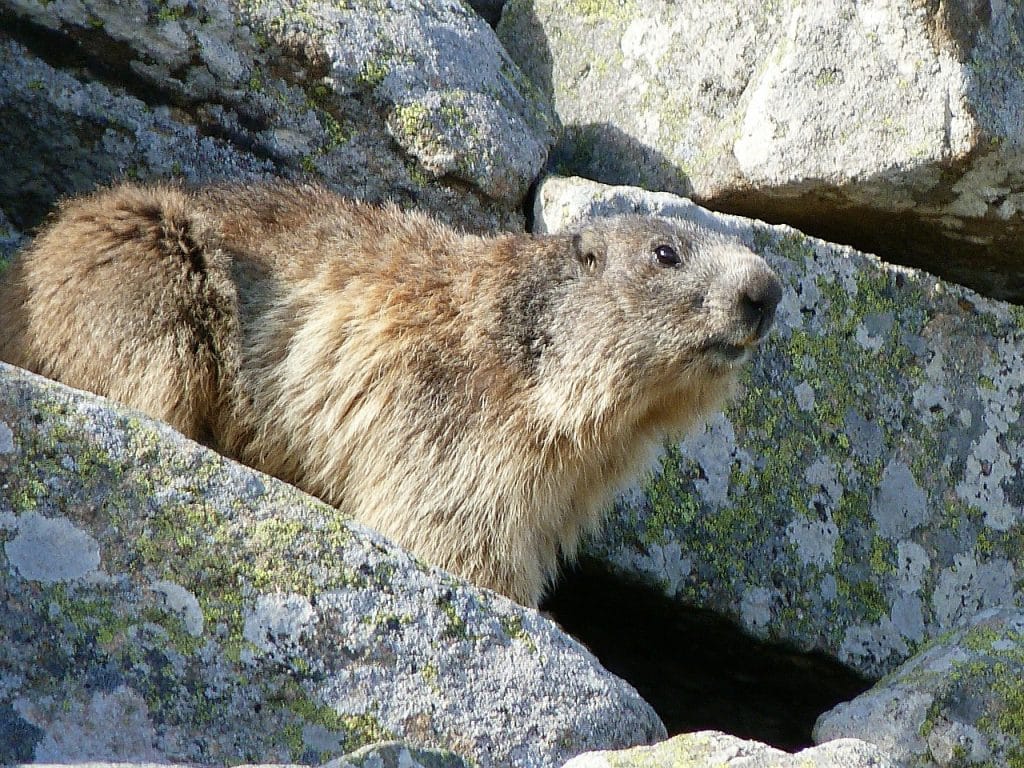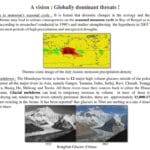Life on the Edge: Conquering the Alpine
Picture this: a landscape sculpted by icy winds, where towering peaks pierce the sky, and the air itself grows thin and frigid. This is the alpine biome, a realm of extremes where survival is a triumph against the odds. Yet, amidst the rugged beauty and relentless challenges, a fascinating array of animals not only survives but thrives.
Alpine biomes, found in high-altitude regions around the world, from the Himalayas to the Andes, are characterized by their cold temperatures, low-growing vegetation, and often treacherous terrain. Life here is a delicate balancing act, demanding resilience and a unique set of adaptations.
Adapt or Perish: The Secrets of Alpine Survival
Alpine animals are masters of adaptation, having evolved remarkable ways to cope with the challenges of their environment. These adaptations are both physical and behavioral, showcasing the incredible power of natural selection.
Built for the Cold and the Climb:
- Insulated and Ready for Anything: Thick fur or feathers are essential for surviving frigid temperatures. A mountain goat’s shaggy coat, for example, provides incredible insulation, while the dense plumage of a white-tailed ptarmigan helps it blend in with the snow and retain body heat.
- Grip Like You’ve Never Seen: Imagine scaling near-vertical slopes with ease. Alpine animals with specialized hooves or claws, like ibex and mountain goats, can do just that. Their adaptations act like built-in climbing gear, providing incredible traction on icy or rocky terrain.
- Thin Air? No Problem: One of the greatest challenges of living at high altitude is the reduced availability of oxygen. Alpine animals, however, have efficient respiratory systems that allow them to thrive in this “thin air.” Some species have larger lung capacities than their lowland counterparts, enabling them to extract oxygen more effectively.
Behavior as a Survival Tool:
- Hibernation: The Long Winter’s Nap: When the alpine winter descends in full force, some animals, like marmots, opt for a long and cozy slumber. Hibernation allows them to conserve energy during the harshest months when food is scarce and temperatures plummet.
- Migration: The Seasonal Journey: Many alpine animals, such as elk and some bird species, have a clever strategy for dealing with winter: they move. Seasonal migration to lower elevations provides access to more plentiful food sources and less severe weather conditions.
- Burrowing: Finding Safety Underground: For animals like pikas and certain rodents, the ground provides a refuge from the elements. Burrows offer stable temperatures and protection from predators, making them ideal for raising young and storing food.
Beyond the Expected: Unmasking Alpine Biodiversity
While iconic species like mountain goats and snow leopards often come to mind when we think of alpine environments, the reality is far more diverse. Alpine biomes are teeming with life, from large mammals to tiny invertebrates, each species playing a crucial role in maintaining the ecosystem’s delicate balance.
Exploring the Hierarchy:
- Mammals: The alpine zone is home to a variety of mammals, each adapted to its particular niche. Herbivores like mountain goats, bighorn sheep, ibex, chamois, and the vicuña graze on sparse vegetation, their movements shaping the landscape. Carnivores like the elusive snow leopard and the lynx rule the higher elevations, their stealth and power perfectly suited for hunting in challenging terrain. And then there are the smaller mammals – marmots, pikas, and chinchillas, to name a few – darting among the rocks and adding to the alpine symphony with their calls and activities.
- Birds: Look up! The skies above alpine regions are often patrolled by birds of prey, such as golden eagles, known for their incredible wingspans and majestic flight. The Andean condor, another high-altitude resident, is a true giant of the skies. But not all alpine birds are soaring predators. The white-tailed ptarmigan, for example, relies on its remarkable camouflage to blend in with its surroundings, its plumage changing color with the seasons.
- Invertebrates: Often overlooked, the invertebrate world of the alpine is surprisingly diverse and vitally important. Beetles, grasshoppers, spiders, dragonflies, and a myriad of other tiny creatures play a crucial role in decomposition, pollination, and providing food for larger animals.
A Fragile Balance: Threats to an Alpine World
As resilient as alpine ecosystems may seem, they are increasingly vulnerable to a range of threats, many of which are driven by human activities. Understanding these threats is crucial for protecting these unique and vital environments.
Climate Change: A Looming Shadow:
- Temperature and Precipitation Shifts: Alpine ecosystems are particularly sensitive to changes in temperature and precipitation. Even small increases in temperature can lead to earlier snowmelt, altering plant life cycles and affecting the availability of food and water for animals.
- Shrinking Habitats: As temperatures rise, treelines are moving upslope, encroaching on alpine zones. This shrinking habitat puts additional pressure on alpine species, making it more difficult for them to find the resources they need to survive.
Human Impact: A Footprint on the Mountain:
- Habitat Loss and Fragmentation: Human development, such as roads, buildings, mines, and ski resorts, fragments alpine habitats, making it difficult for animals to move freely in search of food, mates, and shelter.
- Pollution’s Long Reach: Air and water pollution from industrial activities, vehicle emissions, and agricultural runoff can travel vast distances, reaching even seemingly pristine alpine environments. These contaminants can have serious impacts on the health of alpine animals and the delicate balance of the ecosystem.
- Overgrazing: A Delicate Balance Disrupted: In some regions, overgrazing by livestock can damage sensitive alpine meadows. Overgrazing can lead to soil erosion, reduce the availability of native plant species, and disrupt the delicate balance of the alpine ecosystem.
Conservation: Protecting Life at the Top
The future of alpine animals and their fragile ecosystems depends on our collective commitment to conservation. Protecting these environments requires a multi-faceted approach that addresses both local and global threats.
Hope on the Horizon:
- Safeguarding Havens: The Importance of Protected Areas: Establishing protected areas, like national parks, wildlife refuges, and nature reserves, is essential for conserving alpine habitats. These areas provide safe havens for wildlife and help to mitigate the impacts of human activities.
- Knowledge is Power: Research and Monitoring: Ongoing research and monitoring programs are vital for understanding population trends, identifying threats, and developing effective conservation strategies. By tracking animals and monitoring changes in the environment, scientists can provide valuable data to inform conservation efforts.
- Climate Action: A Global Imperative: Addressing climate change is paramount for the long-term survival of alpine ecosystems. Reducing greenhouse gas emissions through the transition to renewable energy sources, sustainable practices, and international cooperation is crucial for mitigating the impacts of climate change on these vulnerable environments.
The alpine world is a place of stark beauty, incredible adaptations, and delicate balance. By understanding the challenges facing alpine animals, supporting conservation initiatives, and making conscious choices to reduce our own impact on the environment, we can contribute to the preservation of these unique and irreplaceable ecosystems for generations to come. As we marvel at the resilience and wonder of life at the top of the world, let us also remember our responsibility to protect it.
- SYBAU See You Baby Meaning: Gen Z Slang Evolves - July 1, 2025
- Unlock Your Inner Youth: Lifestyle Secrets for a Vibrant Life - July 1, 2025
- Decode SYBAU Meaning: Gen Z Slang Explained - July 1, 2025






